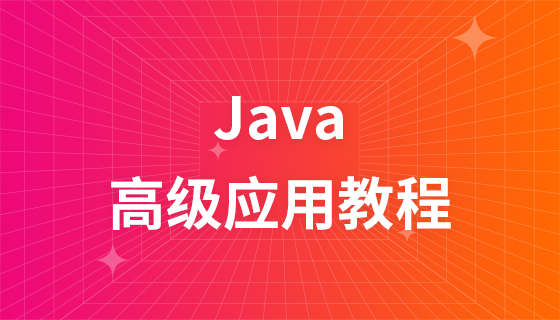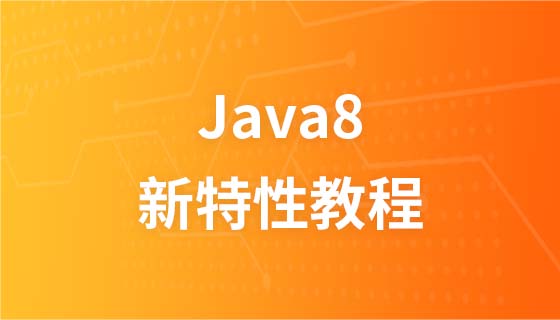本篇文章帶給大家的內容是關於java中多線程中的一些基本方法的使用介紹(附示例),有一定的參考價值,有需要的朋友可以參考一下,希望對你有所幫助。
Thread.sleep(毫秒);我們可以透過sleep方法設定讓線程睡眠。可以看到sleep是個靜態方法
public static native void sleep(long var0) throws InterruptedException;
try {
System.out.println(new Date().getSeconds());
Thread.sleep(5000);
System.out.println(new Date().getSeconds());
} catch (InterruptedException e) {
e.printStackTrace();
}非守護線程停止,那麼守護線程自動退出
public static void main(String[] args) {
Thread thread1 = new Thread() {
@Override
public void run() {
super.run();
for(int i = 0; i < 5; i ++) {
System.out.println("非守护线程");
}
}
};
Thread thread2 = new Thread() {
@Override
public void run() {
for(int i = 0; i < 200; i ++) {
System.out.println("守护线程");
}
}
};
thread2.setDaemon(true);
thread1.start();
thread2.start();
}可以很明顯的看到thread2本來應該執行200次輸出,但是這裡只輸出了幾行。因為當thread1執行完畢後,thread2作為守護線程就自動停止了。 
如果執行了jion方法,那麼就停止當前線程,先跑執行了jion()的線程。相當於插隊執行。如下,在執行thread2執行緒的時候,如果i==20的時候,則讓thread1插隊先執行
public static void main(String[] args) {
final Thread thread1 = new Thread() {
@Override
public void run() {
super.run();
for(int i = 0; i < 500; i ++) {
System.out.println("thread1---" + i);
}
}
};
Thread thread2 = new Thread() {
@Override
public void run() {
for(int i = 0; i < 200; i ++) {
if (i == 20) {
try {
//插队执行
thread1.join();
} catch (InterruptedException e) {
e.printStackTrace();
}
}
System.out.println(i);
}
}
};
thread1.start();
thread2.start();
}join()方法也可以傳參數long 毫秒join(毫秒)
表示讓執行join的線程,插隊執行XXX毫秒,過了時間後,兩個線程交替執行
public static void main(String[] args) {
final Thread thread1 = new Thread() {
@Override
public void run() {
super.run();
for(int i = 0; i < 500; i ++) {
System.out.println("thread1---" + i);
}
}
};
Thread thread2 = new Thread() {
@Override
public void run() {
for(int i = 0; i < 200; i ++) {
if (i == 20) {
try {
//插队执行1毫秒
thread1.join(1);
} catch (InterruptedException e) {
e.printStackTrace();
}
}
System.out.println(i);
}
}
};
thread1.start();
thread2.start();
}yeild會讓出cpu,讓其他線程執行
public static void main(String[] args) {
final Thread thread1 = new Thread() {
@Override
public void run() {
super.run();
for(int i = 0; i < 500; i ++) {
System.out.println( getName() + "---" + i);
}
}
};
Thread thread2 = new Thread() {
@Override
public void run() {
for(int i = 0; i < 200; i ++) {
if (i % 5 == 0) {
Thread.yield();
}
System.out.println(getName() + "---" + i);
}
}
};
thread1.start();
thread2.start();
}預設優先權是5 最小1,最大10
越大優先權越高
public static void main(String[] args) {
final Thread thread1 = new Thread() {
@Override
public void run() {
super.run();
for(int i = 0; i < 500; i ++) {
System.out.println( getName() + "---" + i);
}
}
};
Thread thread2 = new Thread() {
@Override
public void run() {
for(int i = 0; i < 500; i ++) {
System.out.println(getName() + "---" + i);
}
}
};
//设置最大的线程优先级最大为10
thread1.setPriority(Thread.MIN_PRIORITY);
//设置最小的线程优先级,最小为1
thread2.setPriority(Thread.MAX_PRIORITY);
thread1.start();
thread2.start();
}當多執行緒並發,多段程式碼同時執行的時候。希望在執行其中程式碼的時候,cpu不切換執行緒
我們來看一下不用synchronized的情況會發生什麼
public class ThreadSynchronied {
public static void main(String[] args) {
final Say say = new Say();
Thread thread1 = new Thread() {
@Override
public void run() {
for (int i = 0 ; i < 10000 ; i ++) {
say.say();
}
}
};
Thread thread2 = new Thread() {
@Override
public void run() {
for (int i = 0 ; i < 10000 ; i ++) {
say.say1();
}
}
};
//设置最大的线程优先级最大为10
thread1.setPriority(Thread.MIN_PRIORITY);
//设置最小的线程优先级,最小为1
thread2.setPriority(Thread.MAX_PRIORITY);
thread1.start();
thread2.start();
}
}
class Say {
void say() {
System.out.print("s ");
System.out.print("a ");
System.out.print("y ");
System.out.print("h ");
System.out.print("e ");
System.out.print("l ");
System.out.print("l ");
System.out.println("o");
}
void say1() {
System.out.print("1 ");
System.out.print("2 ");
System.out.print("3 ");
System.out.print("4 ");
System.out.print("5 ");
System.out.print("6 ");
System.out.print("7 ");
System.out.println("8");
}
}
我們發現有些輸出並沒有印出全,在執行緒thread1的過程中,cpu被thread2搶佔。這種情況下,肯定是不符合我們的業務邏輯的。所以我們要確保執行緒執行了一個完整的方法後,cpu才會被其他執行緒搶佔
public class ThreadSynchronied {
public static void main(String[] args) {
final Say say = new Say();
Thread thread1 = new Thread() {
@Override
public void run() {
for (int i = 0 ; i < 10000 ; i ++) {
say.say();
}
}
};
Thread thread2 = new Thread() {
@Override
public void run() {
for (int i = 0 ; i < 10000 ; i ++) {
say.say1();
}
}
};
//设置最大的线程优先级最大为10
thread1.setPriority(Thread.MIN_PRIORITY);
//设置最小的线程优先级,最小为1
thread2.setPriority(Thread.MAX_PRIORITY);
thread1.start();
thread2.start();
}
}
class Say {
String s = "hahaah";
void say() {
synchronized (s) {
System.out.print("s ");
System.out.print("a ");
System.out.print("y ");
System.out.print("h ");
System.out.print("e ");
System.out.print("l ");
System.out.print("l ");
System.out.println("o");
}
}
void say1() {
synchronized (s) {
System.out.print("1 ");
System.out.print("2 ");
System.out.print("3 ");
System.out.print("4 ");
System.out.print("5 ");
System.out.print("6 ");
System.out.print("7 ");
System.out.println("8");
}
}
}
使用synchronized同步程式碼區塊後,就發現不會出現上述情況了
public class ThreadSynchroniedMethod {
public static void main(String[] args) {
final Say say = new Say();
Thread thread1 = new Thread() {
@Override
public void run() {
for (int i = 0 ; i < 10000 ; i ++) {
say.say();
}
}
};
Thread thread2 = new Thread() {
@Override
public void run() {
for (int i = 0 ; i < 10000 ; i ++) {
say.say1();
}
}
};
//设置最大的线程优先级最大为10
thread1.setPriority(Thread.MIN_PRIORITY);
//设置最小的线程优先级,最小为1
thread2.setPriority(Thread.MAX_PRIORITY);
thread1.start();
thread2.start();
}
}
class Say {
//在方法上加锁
static synchronized void say() {
System.out.print("s ");
System.out.print("a ");
System.out.print("y ");
System.out.print("h ");
System.out.print("e ");
System.out.print("l ");
System.out.print("l ");
System.out.println("o");
}
static void say1() {
synchronized (Say.class) {
System.out.print("1 ");
System.out.print("2 ");
System.out.print("3 ");
System.out.print("4 ");
System.out.print("5 ");
System.out.print("6 ");
System.out.print("7 ");
System.out.println("8");
}
}
}同步方法指的就是在方法上加鎖
#靜態同步方法的所物件是該類別的字節碼物件
非靜態的同步方法鎖定物件是this
#死鎖是指兩個或兩個以上的進程在執行過程中,由於競爭資源或由於彼此通信而造成的一種阻塞的現象,若無外力作用,它們都將無法推進下去。此時稱系統處於死鎖狀態或系統產生了死鎖,這些永遠在互相等待的進程稱為死鎖進程。
Vector
StringBuffer
HashTable
ArrayList
StringBuilder
# HashSet
java.util.Collections中有synchronizedList等方法,支援我們把執行緒不安全的集合轉成線程安全的
以上是java中多線程的一些基本方法的使用介紹(附範例)的詳細內容。更多資訊請關注PHP中文網其他相關文章!




